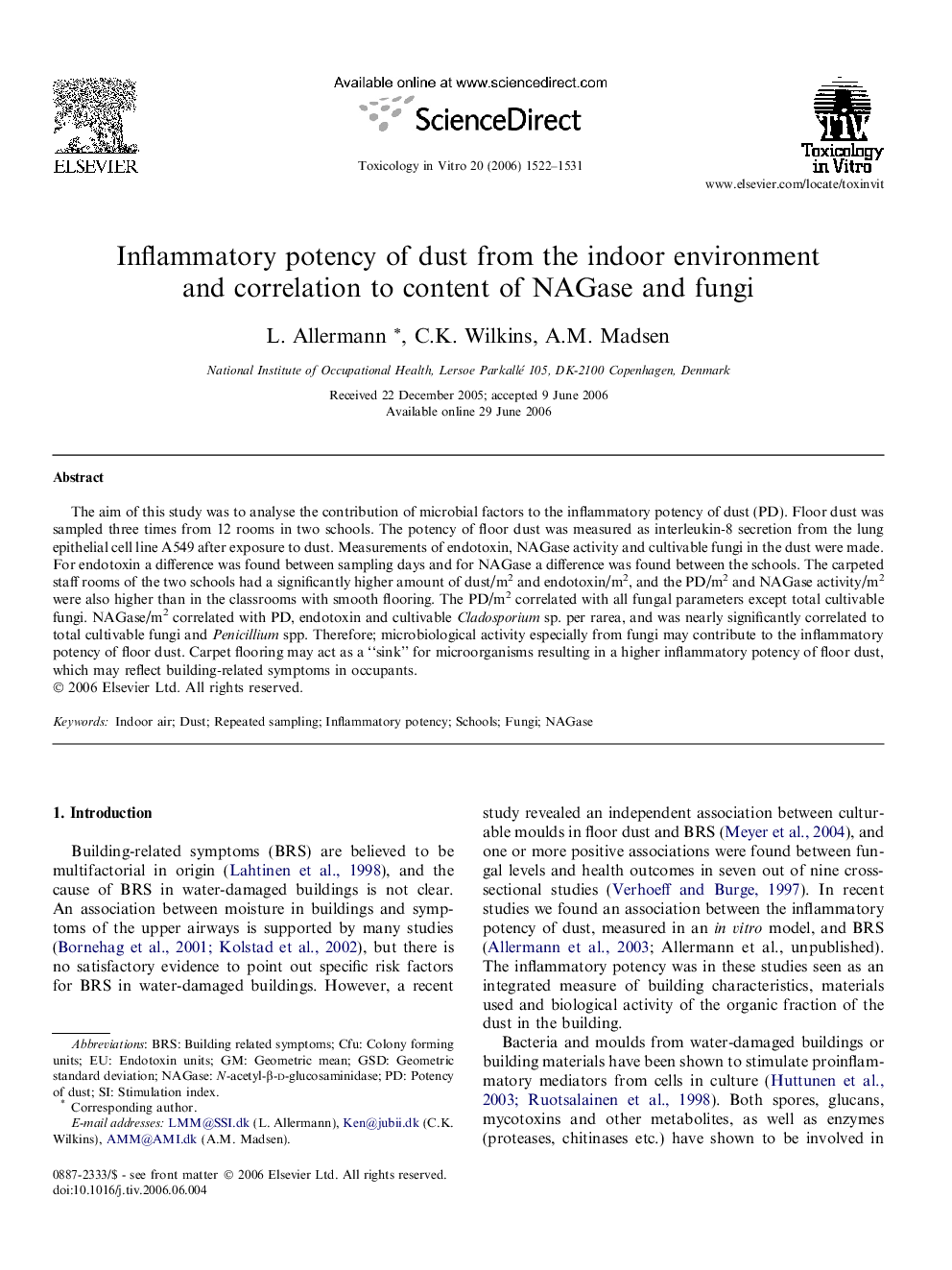| Article ID | Journal | Published Year | Pages | File Type |
|---|---|---|---|---|
| 2603597 | Toxicology in Vitro | 2006 | 10 Pages |
The aim of this study was to analyse the contribution of microbial factors to the inflammatory potency of dust (PD). Floor dust was sampled three times from 12 rooms in two schools. The potency of floor dust was measured as interleukin-8 secretion from the lung epithelial cell line A549 after exposure to dust. Measurements of endotoxin, NAGase activity and cultivable fungi in the dust were made. For endotoxin a difference was found between sampling days and for NAGase a difference was found between the schools. The carpeted staff rooms of the two schools had a significantly higher amount of dust/m2 and endotoxin/m2, and the PD/m2 and NAGase activity/m2 were also higher than in the classrooms with smooth flooring. The PD/m2 correlated with all fungal parameters except total cultivable fungi. NAGase/m2 correlated with PD, endotoxin and cultivable Cladosporium sp. per rarea, and was nearly significantly correlated to total cultivable fungi and Penicillium spp. Therefore; microbiological activity especially from fungi may contribute to the inflammatory potency of floor dust. Carpet flooring may act as a “sink” for microorganisms resulting in a higher inflammatory potency of floor dust, which may reflect building-related symptoms in occupants.
